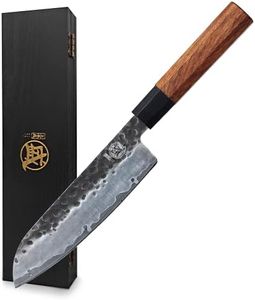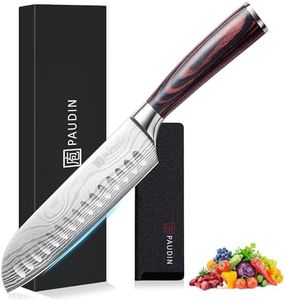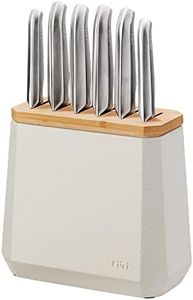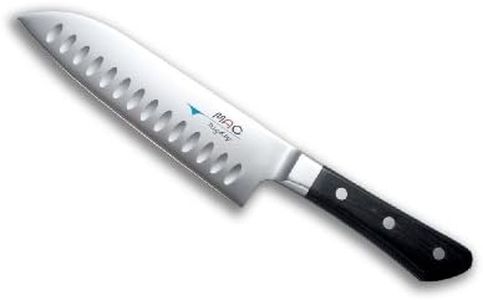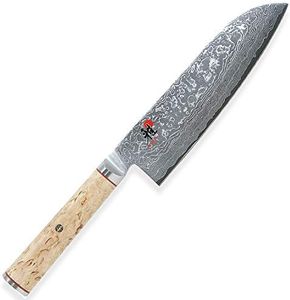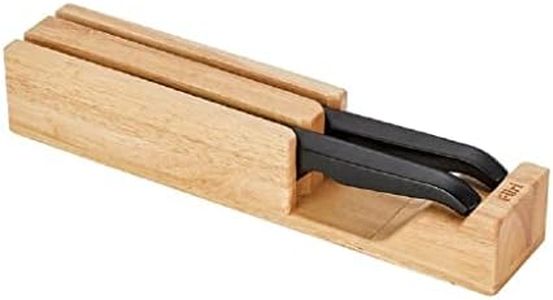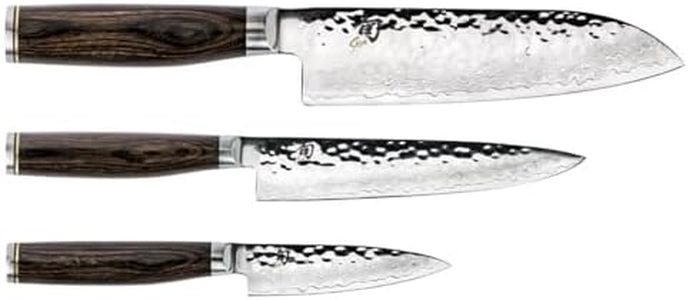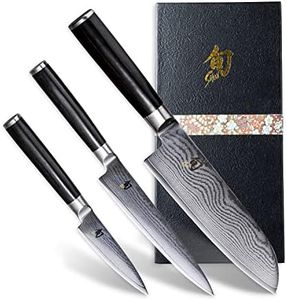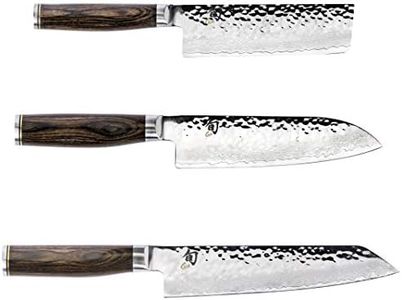We Use CookiesWe use cookies to enhance the security, performance,
functionality and for analytical and promotional activities. By continuing to browse this site you
are agreeing to our privacy policy
10 Best Santoku Knives
From leading brands and best sellers available on the web.Buying Guide for the Best Santoku Knives
Santoku knives are popular all-purpose kitchen knives that originated in Japan. They're known for their versatility, making them well-suited for slicing, dicing, and mincing a variety of foods such as vegetables, fruits, and meats. When choosing a santoku knife, the goal is to find a tool that feels comfortable, performs well for your cooking style, and offers durability for long-term use. Focus on the key features that affect usability and maintenance, and match the knife to your kitchen tasks and experience level.Blade MaterialThe blade material refers to what the knife is made from, which greatly affects the knife’s sharpness, edge retention, rust resistance, and maintenance needs. Common options include stainless steel, high-carbon steel, and sometimes ceramic. Stainless steel is easy to maintain and resistant to rust, making it good for everyday users. High-carbon steel blades are very sharp and hold their edge longer but can rust if not cared for. Ceramic blades are extremely sharp and lightweight, but they are more brittle and can chip easily. If you want something low-maintenance, stainless steel is a smart choice; if you prioritize sharpness and don’t mind extra care, high-carbon steel might be ideal.
Blade LengthBlade length determines how much cutting surface you have and how easily you can handle different food sizes. Typical santoku knives range from about 5 to 7 inches. Shorter blades (around 5 inches) offer more control for detailed tasks and smaller hands, while longer blades (6-7 inches) allow for greater versatility with bigger cuts and larger foods. Choose a blade length that feels comfortable in your hand and suits the type of food you prepare most often.
Blade Shape and EdgeSantoku knives typically have a wide, straight-edge blade with a sheepsfoot tip, which means the spine curves down to meet the edge. Many also feature a granton edge (dimples along the side) to help prevent food from sticking. A flat edge is ideal for precise straight cuts, especially with vegetables. If you frequently slice sticky foods like potatoes, a granton edge can make your work easier. Consider the foods you prepare most and pick a blade shape and edge that supports those tasks.
Handle Design and MaterialThe handle affects comfort, grip, and overall control of the knife. Handles can be made from wood, plastic, or composite materials. Wooden handles offer a natural feel and traditional aesthetic, but may require more care. Plastic and composites are often more durable and resistant to moisture. When choosing handle shape, look for something that fits comfortably in your hand and provides a secure grip. If you’ll be using your knife for long periods, prioritize ergonomics to reduce fatigue.
Weight and BalanceWeight and balance refer to how heavy the knife feels and how evenly its weight is distributed between the blade and handle. Heavier knives can make chopping easier because the weight does some of the work, but they may be tiring with long use. Lighter knives offer agility and quick movements, which can be helpful for fine slicing and dicing. A well-balanced knife feels stable and natural in your hand, reducing strain. Test a few to find what feels best for your preferred cooking style and hand size.
Ease of MaintenanceThis covers how easy the knife is to clean, sharpen, and keep in good shape. Stainless steel and some synthetic handles are dishwasher-safe and low-maintenance, though it’s generally best to hand-wash all knives to prolong their life. High-carbon blades and wooden handles need more care to avoid rusting or warping. Think about how much time and effort you’re willing to spend on upkeep, and choose a knife that matches your routine.
